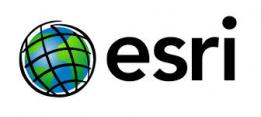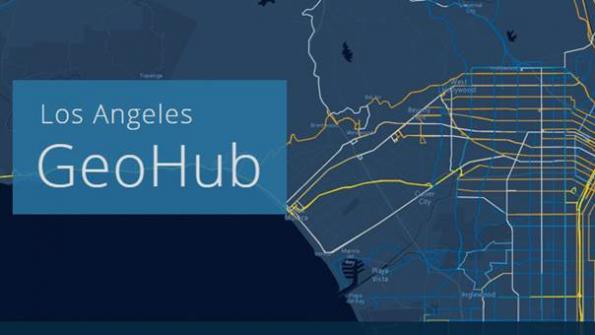Map platform puts open data to work in Los Angeles (with related video)
Los Angeles’ new GeoHub is up and running. It is a collection of urban map data. The system makes more than 500 types of map data available to residents, city workers, and private industry. The GeoHub helps Angelenos better understand their communities, and city departments better coordinate construction, road paving, and public safety efforts.
“On its own, data gives us important insights into how our city works, and now we are putting open data to work,” said Los Angeles Mayor Eric Garcetti at the system’s recent launch. “The GeoHub provides real-time access to all the data we need in one convenient place, allowing us to improve everything from pothole repair to 311 call times, make smarter urban planning decisions, and make it easier for emergency responders to get to their next location. This is back to basics at its best.”
GeoHub is one part of Mayor Garcetti’s broader strategy of using technology and data to delivery transparency, efficiency and community engagement.
The system was created in collaboration with Esri, a provider of geographic information systems (GIS) technology. GeoHub was built on Esri’s ArcGIS platform. The system pools map data layers from more than 20 different departments — allowing users to create living maps and build custom applications to solve pressing challenges and optimize city services. 
By pooling key data sets, and mapping their locations, city departments are now equipped with tools to get their work done more quickly and efficiently. The setup provides a complete picture of what’s happening on the streets of Los Angeles — including real-time traffic data, road obstructions, the inspection status of nearby buildings, business activity, as well as the nearest fire hydrants. GeoHub can help firefighters, sanitation workers, utility workers and all city personnel better understand the neighborhoods they serve.
With the system, city staff will spend less time searching for and recreating existing data points and more time using location-based data and real-time mapping tools to increase operational efficiencies. The setup enables easier access to location-based data for citizens, academia, NGOs and businesses. In addition, city staffs, businesses, researchers, trade groups, students and others can easily create new apps from the hub application program interfaces (APIs).
To show the power and range of the hub, Los Angeles is developing three flagship applications: “Streetwize,” which shows all of the permitted activity on the city’s public right of ways; “The Road to 2400,” which tracks the Bureau of Street Services’ progress on paving at least 2,400 lane miles per year; and “Vision Zero High Injury Network,” which can help improve pedestrian safety by providing users with key information — including where schools and high speed streets intersect.
The LA system is about bringing information and people together, says Brian Cross, Director of Professional Services at Esri. “The GeoHub connects city departments and regional stakeholders using a location-as-a-service platform (LaaS) to plan and support city operations efficiently. Residents, businesses, and NGOs can also use the Esri enterprise location engine to make decisions at speed and scale to engender thriving, dynamic communities.”
Cross lists three main steps to the creation of the hub setup:
— Orientation and planning: Engagement begins with understanding and getting agreement on city priorities and initiatives to be addressed.
— Implementation of infrastructure: (1) assessing and inventorying available data, maps, apps and gaps, (2) implementing open web services, (3) configuration of key apps, and (4) creation of open data environment.
— Education, training and outreach: including workforce education, community workshops, support for community “Hub Connect Days” and support for app challenges to start the community down the engagement path using their GIS Hub.
Cross says cities can undertake these steps themselves, or enlist Esri’s assistance. In addition to steps for “how” to create a Hub environment, Cross says there are some important characteristics to consider.
— Executive sponsorship is critical.
— You need a champion who can bridge the executive goals with the technical and departmental capabilities. This is usually a Chief Data Officer, Chief Innovation Officers, or a similar role.
— It’s best to have existing GIS/IT Technology in place.
Cross adds: “There needs to be a desire for cross-cutting organizational initiatives to support data sharing.”
In the video, Los Angeles Mayor Eric Garcetti and Esri President Jack Dangermond unveil L.A.’s GeoHub system.
_____________
To get connected and stay up-to-date with similar content from American City & County:
Like us on Facebook
Follow us on Twitter
Watch us on Youtube




















